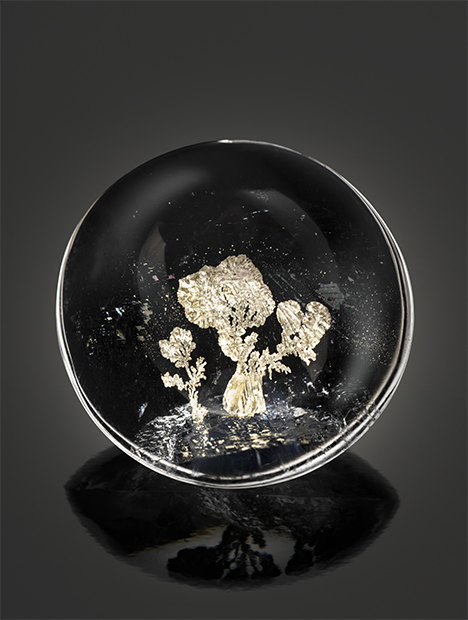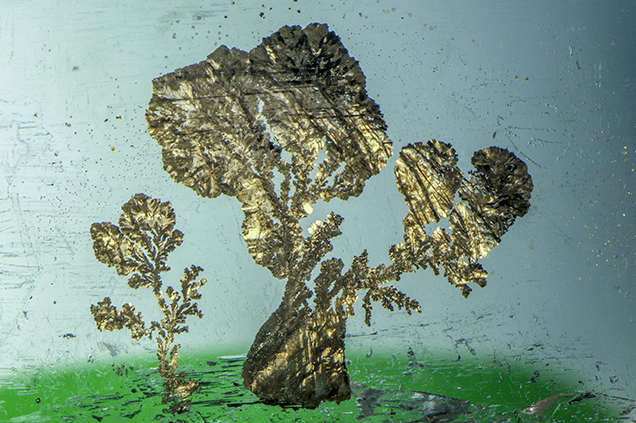Tree in Rock Crystal Quartz

The unusual quartz cabochon shown in figure 1 displays visually appealing dendritic inclusions that resemble trees. This inclusion scene is an excellent example of pareidolia, the tendency to assign familiar shapes to abstract forms (see Winter 2007 Lab Notes, pp. 363–364). Combined with a unique illumination technique, the inclusions are reminiscent of trees with green grass and a blue sky (figure 2).

The dendritic “tree” patterns are metal sulfide inclusions, as evidenced by their brassy yellow metallic color and opaque nature. When viewed with diffused fiber-optic lighting, the metal sulfide inclusions show a crisp foil-like texture near a partially healed internal fracture. This is likely where the metal sulfides entered the quartz host. They were deposited as an epigenetic residue in the fracture near the base of the tree, which was later healed, leaving behind the metal sulfides and numerous minute fluid inclusions where the fracture once was.
Adding green and blue filters behind the stone, known as modified Rheinberg illumination (Fall 2015, pp. 328–229), helped complete the appearance of a micro-landscape contained in the rock crystal quartz. This lighting technique is characterized by using contrasting color filters to bring striking color contrast to scenes viewed with a microscope (N.D. Renfro, “Digital photomicrography for gemologists,” Summer 2015 G&G, pp. 144–159). This unique quartz gem can be appreciated for the beautiful inclusion scene it contains.



